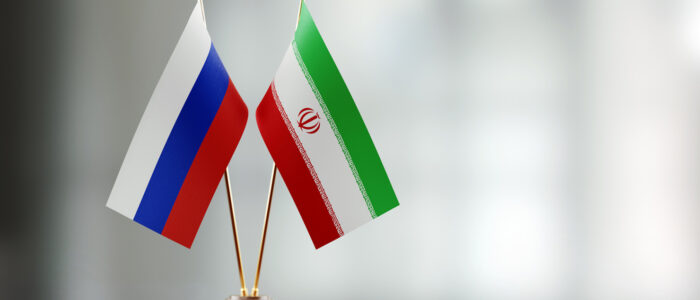With an inflation rate soaring over 50% and an increasing youth unemployment rate, around half of Iranians are said to be pushed below the poverty line. The Western economic sanctions on Iran due to its alleged nuclear proliferation are one of the major reasons behind the crippling Iranian economy and the highest level of inflation in decades. However, Iran has sought to explore its ways around the Western sanctions, the latest of which is linking the state’s banking system with Russia to overcome its reliance on Western-based payment systems. According to a deal signed on 29 January 2023, approximately 700 Russian banks, along with almost 106 non-Russian banks from across 13 different countries, will be connected to this system.
An important goal behind launching the project to connect banking systems is to find alternative international payment systems for trade. Previously, both states used Society for Worldwide Interbank Financial Communications (SWIFT), a Western financial messaging system for international transactions, foreign exchange settlements and trade. Still, Iran has had a rather bumpy relationship with the system since 2012. After an inconsistent trend of imposing and lifting sanctions, SWIFT finally disconnected Iranian banks in 2018. The action was taken due to the United States (US) renewal of sanctions against Iran, provided that many US banks act as intermediaries in the SWIFT banking system. Following the Russian invasion of Ukraine in March 2022, SWIFT took similar actions against Russia when it disconnected and removed seven Russian banks from its system. The goal of Western allies behind these actions was to deplete the Russian government’s revenues by adding delays and increasing the cost of trade exports and Russia’s ability to operate smoothly at a global level.
What has been witnessed as a hallmark in economic integration is likely to turn into remarkable mutual cooperation in the cyber domain, foreign investment, and technological cooperation that will bolster regime security for Iran and strengthen the sphere of influence for Russia.
Linking the banking systems provides an alternative for both states to bypass the Western sanctions. The new arrangement connects Iran’s System for Electronic Payments Messaging (SEPAM) to Russia’s Financial Messaging System of the Bank of Russia (SPFS). Mohsen Karimi, the Deputy Governor of Iran’s Central Bank, stated that now with interconnected Russian banks, Iran no longer needs SWIFT. The Governor of Iran’s Central Bank, Mohamemad Reza Farzin, also reasserted that Iran is restoring its financial channel with the world, signalling the end to Iran’s economic isolation amid Western sanctions. According to one report, the arrangement will allow both states to increase trade volume by up to $10 billion a year.
The details of the deal and specifics of how exactly the system will operate have not been made public. The names of other countries involved in the interconnected banking system are also not made available yet, which makes it difficult to assess the extent of benefits both states are likely to gain from this arrangement. However, this step is progress in strengthening bilateral economic and diplomatic ties between both states. At the same time, this step is alarming for the West. Finding alternatives and evading blockades is not exactly what the Western allies expected as the outcome of the sanctions on both Russia and Iran. If the sanctioned states can find a way to bypass the sanctions, this might be the time when the West loses one of its very powerful cards in the game. This situation could potentially turn into the West losing its advantage or at least weakening its position vis-à-vis Iran and Russia.
Russia-Iran relations have prospered beyond economic domains as well. The weapons trade has also peaked between both states, with Iran now being the provider in the equation. Apart from trade, allegedly, the Iranian Revolutionary Guard Corps (IRGC) personnel are being deployed on Russian bases in Crimea to train their Russian counterparts regarding the usage and operation of the arms and equipment. Similarly, both states have been backing each other diplomatically as well. Iran’s supreme leader Ayatollah Ali Khamenei supported Russia’s actions vis-à-vis Ukraine, calling them Russia’s attempt to defend itself against potential NATO aggression against Russia. Alternately, Iran requires Russia’s diplomatic support regarding the issue of alleged noncompliance with nuclear non-proliferation. Recently, the regime has witnessed increasing Moscow’s support at the International Atomic Energy Agency’s Board of Governors as well. The distressing part for the West in this situation is not only that Russia and Iran are collaborating but the prospect that this could just be the beginning of a potential larger polarisation which may include more states as well.
What has been witnessed as a hallmark in economic integration is likely to turn into remarkable mutual cooperation in the cyber domain, foreign investment, and technological cooperation that will bolster regime security for Iran and strengthen the sphere of influence for Russia. The Western alliance has dubbed the arrangement an “alliance of convenience”, but it could potentially turn into a sustainable and mutually beneficial bilateral alliance. Nonetheless, these developments pose a new challenge for the West, which now has to rethink the effectiveness of the sanctions mechanism.
